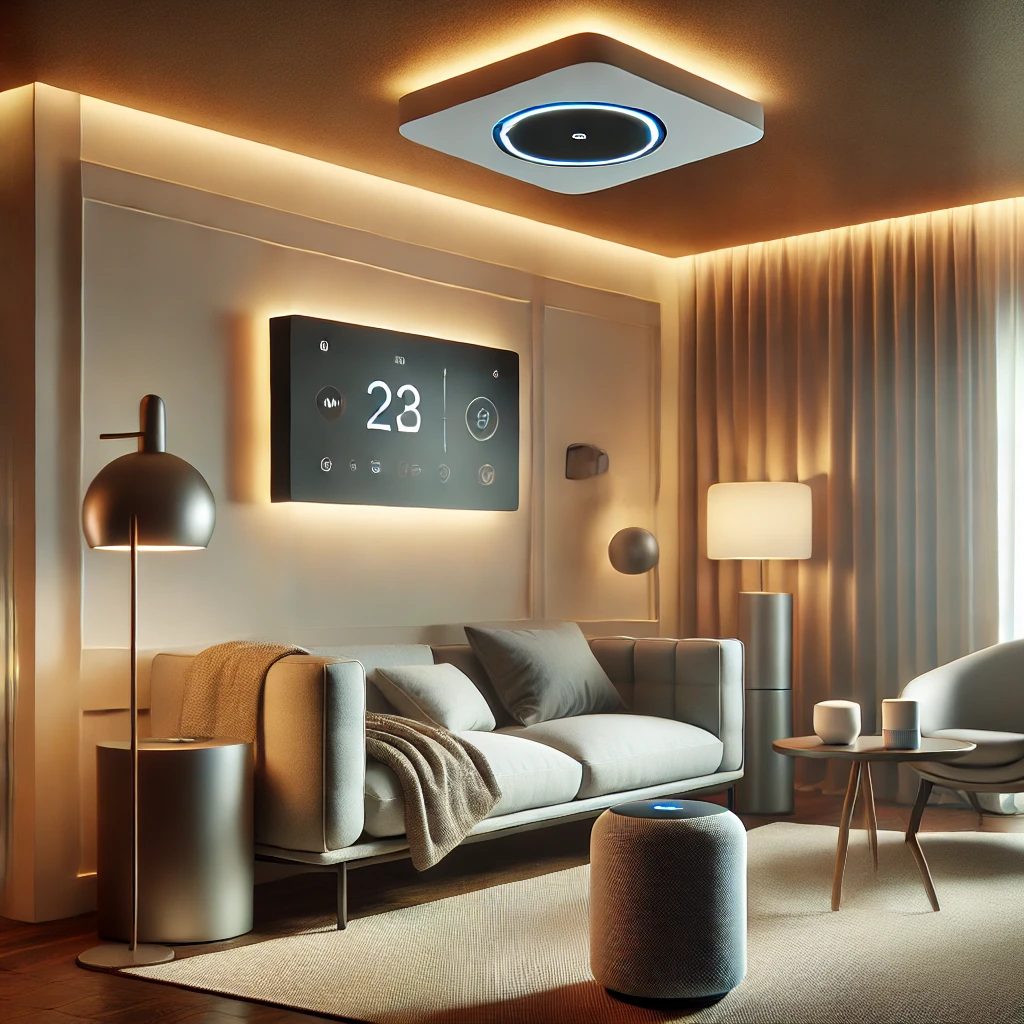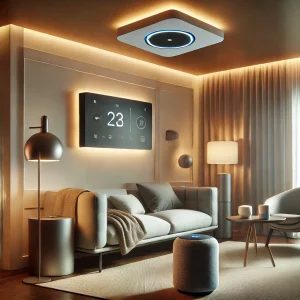
How to Build a Smart Home: A Beginner’s Guide

How to Build a Smart Home: A Beginner’s Guide.
In the age of technological advancements, smart homes have transitioned from being futuristic dreams to attainable realities. They offer convenience, energy efficiency, and enhanced security. This guide is tailored for beginners aiming to build a smart home, covering essential components, setup tips, and trending smart home devices.
By the end of this article, you’ll have a roadmap to transforming your living space into a tech-savvy haven.
—
What Is a Smart Home?
A smart home uses connected devices and systems to automate and control various functions, such as lighting, security, and climate. These devices communicate through Wi-Fi, Bluetooth, or specialized protocols like Zigbee or Z-Wave, allowing you to manage your home remotely via a smartphone or voice commands.
—
Benefits of Building a Smart Home
1. Convenience: Control appliances, lights, and locks with your voice or smartphone.
2. Energy Efficiency: Smart thermostats and lighting reduce energy consumption, cutting utility bills.
READ ALSO: Best Tools for Website SEO in 2024
3. Security: Advanced systems monitor your home with real-time alerts and remote access.
4. Customization: Tailor automation to fit your lifestyle, such as scheduling lights or setting morning routines.
—
Essential Components of a Smart Home
1. Smart Hub (Optional)
Acts as the control center for devices.
Popular options: Amazon Echo, Google Nest Hub, or Samsung SmartThings.
Many devices now work without hubs using Wi-Fi.
2. Smart Lighting
Features: Adjustable brightness, color changes, and scheduling.
Recommended products: Philips Hue, LIFX, and TP-Link Kasa Smart Bulbs.
3. Smart Thermostats
Automatically adjust temperatures for comfort and efficiency.
Recommended products: Google Nest Thermostat and Ecobee SmartThermostat.
4. Smart Security Systems
Components: Cameras, motion detectors, and smart locks.
Recommended brands: Ring, Arlo, and SimpliSafe.
5. Smart Plugs and Outlets
Make traditional appliances smart.
Popular choices: TP-Link Kasa Smart Plug and Wemo Mini Smart Plug.
6. Smart Speakers and Displays
Combine entertainment with home control.
Leading devices: Amazon Echo Show and Google Nest Hub Max.
7. Smart Appliances
Examples: Smart refrigerators, ovens, and washers.
Recommended brands: Samsung Smart Appliances and LG ThinQ.
8. Smart Cameras and Doorbells
Provide 24/7 surveillance and two-way communication.
Options: Ring Doorbell, Wyze Cam, and Blink Outdoor.
—
How to Build Your Smart Home
1. Start Small
Begin with one or two devices that address your immediate needs, such as smart lighting or a security camera.
2. Choose a Platform
Decide whether to integrate with Alexa, Google Assistant, or Apple HomeKit. Compatibility simplifies expansion.
3. Plan Connectivity
Ensure strong Wi-Fi coverage in all areas of your home.
Invest in a mesh Wi-Fi system like Google Nest Wi-Fi for large spaces.
4. Set a Budget
Allocate funds wisely, prioritizing essential devices before luxuries like smart appliances.
5. DIY vs. Professional Installation
Many devices are plug-and-play, requiring no technical expertise.
For complex systems like security setups, consider hiring a professional.
—
Top Smart Home Trends in 2024
1. Sustainability Features
Devices like smart sprinklers and energy monitors align with eco-friendly living.
2. Voice Control Advancements
Enhanced AI ensures more accurate and natural communication with devices.
3. Integration of AI and Machine Learning
Smart systems learn user preferences over time for seamless automation.
4. Home Health Monitoring
Devices like smart air purifiers and water quality monitors are gaining traction.
—
Common Mistakes to Avoid
1. Ignoring Compatibility: Always verify that new devices work with your chosen ecosystem.
2. Overloading Wi-Fi: Use dual-band or tri-band routers to handle multiple devices.
3. Skipping Security Measures: Protect your network with strong passwords and enable two-factor authentication.
4. Neglecting Updates: Regularly update firmware to ensure functionality and security.
—
Building a Future-Proof Smart Home
As technology evolves, your smart home should adapt. Future-proof your setup by:
Choosing devices with open APIs for better integration.
Opting for modular systems that allow for upgrades.
Keeping an eye on emerging technologies, such as 5G-enabled devices.
—
Final Thoughts
Building a smart home may seem daunting, but breaking it into manageable steps simplifies the process. Start with your priorities, choose compatible devices, and expand gradually. A well-planned smart home not only enhances your lifestyle but also adds value to your property.
By following this guide, you’ll create a personalized smart home that reflects your needs and keeps you ahead in the digital age.





